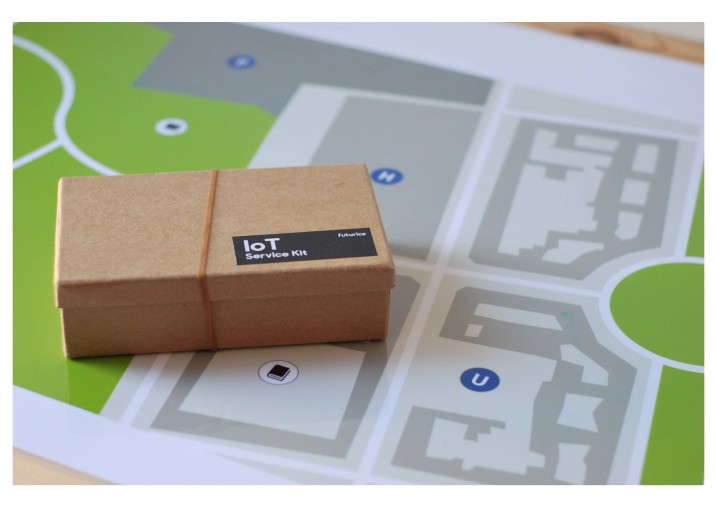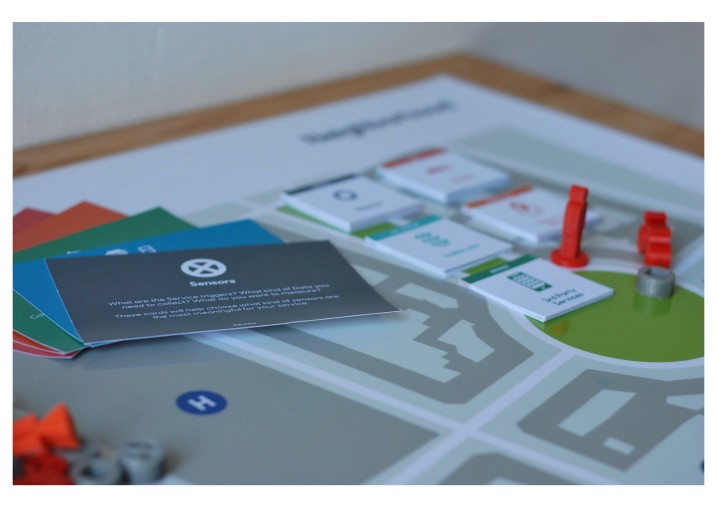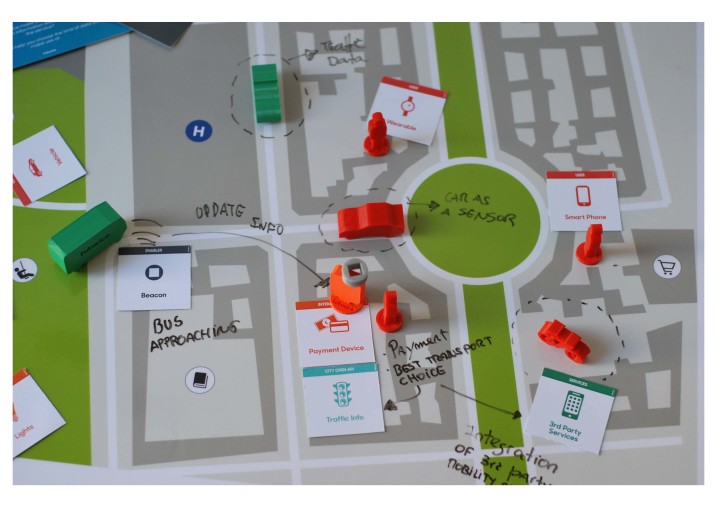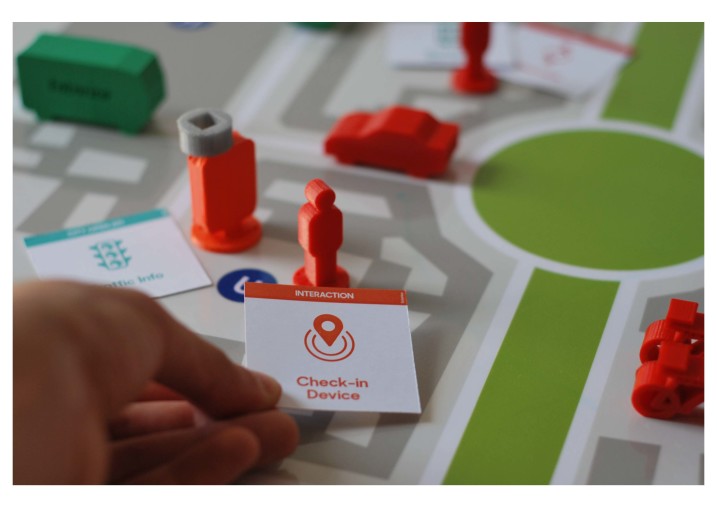3.OUTPUT
As a first step in their development of a Service Design aid the Futurice team identified three main challenges:
1. Communication In order to tackle
IoT the teaming up of engineering and design experts is vital. Due to differing mindsets and detrimental focus communication between drafting (designers) and building (engineers) staff tends to be hindered.
2. Scope of Technology
For designers it is a challenge to keep up with the constant changes in existing technologies as they are not everyone’s cup of tea. Designers have to be supported to keep track of the limits and abilities of new technologies in order to develop viable new services or products.
3. Abstraction
During the development of connected services based on IoT one is likely to arrive at an unusually high level of abstraction and speculative designs. That poses a problem because ideas and technical feasibility are often not aligned.
The Kit team addressed the outlined challenges by defining what their service design tool aimed at should be able to do. It should:
● facilitate communication within multidisciplinary service design teams
● turn the abstract level of communication into something tangible and real
● enhance designers’ access to and understanding of technological changes
● visualise entire user journeys contextually, providing an overview of different touchpoints, triggers and actions
Those objectives were mostly met by the presentday outcome product, a methodological tool to support the ideation of IoT concepts. The IoT Service Kit enables designers and engineers to communicate on the same level. Depicting ideas in relation to new IoT services physically by using tokens and maps enables ideation teams to showcase their ideas on a handy small scaled game reality. Testing emerging concepts within a depicted physical reality helps these teams to identify abilities and pain points of services involving high end technology.
The ideation kit comes in the form of a board game including game cards, 3Dprinted tokens and blueprint maps as a play board. The cards are divided into categories such as “sensors”¨ “open data” “interaction” “service” and “ user” Each category contains different items potentially able to fulfil a certain function. Participants of an ideation session can use the items of one group interchangeably and thus easily iterate their service propositions. Due to the tangibility of tokens and cards, ideating teams are motivated “to run around” drawing from a range of technological products or services for the development of IoT services. The printed blueprint maps serve as play boards depicting different scenarios from retail to logistics. The tokens motivate teams to engage in role play during ideation, an ideal basis to understand and consider the users’ perspective.
The rules of the game are easy to grasp. The IoT Service Kit is used by picking a particular context, starting off with a certain map, and then recreating the customer experience around it. Arranging the tokens on the blueprint aids discussion and in turn thus creates a working ground for ideating participants. Ideally, the different depictions created during the discussion about a service draft should be documented in order to be able to draw from them at a later time and to monitor progress.
Using the IoT Service Kit has proven to be a viable tool for fast and productive prototyping in internally as well as externally conducted workshops. It has been presented in the main conference schedule of Service Experience Camp last November in Berlin, The playful and fun character of the board game tool helps to align different experts mindsets and knowledge base, and facilitates conversation and debate in a tangible and productive way. Final outcome of the methodological tool is the depiction of the entire user journey for IoT services. Using the kit provides a clearer overview of the necessary technological frameworks and enables touchpoint management. It also provides suggestions with regard to viable technological substitutes via the cards’ preselected categorisation.











Share your thoughts
0 RepliesPlease login to comment